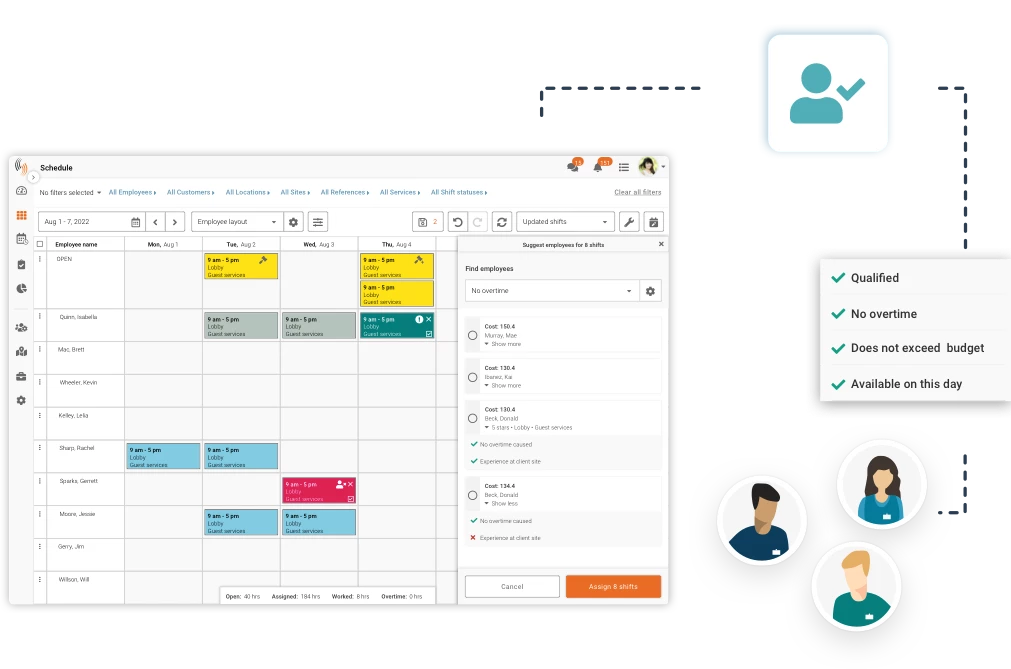Swing shift hours, also known as second shift or afternoon shift, are work schedules that begin in the late afternoon and extend until late at night. In this blog post, we’ll explore the advantages of swing shift schedules and how they can be distributed to maximize their benefits. First, let’s take a deeper look at what they are.
What are Swing Shift Hours?
Swing shift is a work schedule that falls between day and night shifts, according to its official definition. It’s an effective way to relieve shift workers to get them home at a reasonable hour. It also allows night shift workers to rest, and not start too early. However, there is a secondary meaning that refers to a group of factory workers who are available seven days a week to work as needed. This ensures that regular workers can take one or more days off each week without interrupting production.

Are Swing Shift Hours different to rotating schedules?
Although swing shift typically refers to a shift that falls between the day and night shifts, rotating shift schedules are entirely different. A rotating shift schedule means that employees do not have a set day or night shift, but instead frequently cycle through various scheduled shifts. This type of schedule is common in industries such as healthcare, retail, and emergency services. In a rotating shift schedule, all employees have equal opportunities, such as working during peak hours or on less stressful shifts.
On the other hand, a swing shift schedule involves employees with regularly scheduled day and night shifts, and swing shift workers cover additional hours or assist during the busiest times of the day. Unlike rotating shift schedules, swing shift workers do not have the opportunity to experience working the typical day or night shift. However, working a swing shift provides more stability in your schedule than a rotating shift system. That stability is appealing to many employees.
What are the benefits of Swing Shift Hours?
Improved Work-Life Balance

These schedules can provide a better work-life balance for employees, particularly those with family or personal commitments during the day. With swing shift hours, employees have the flexibility to attend to personal needs during the day, while still fulfilling their work responsibilities in the evening.
Better Productivity
Studies have shown that workers on swing shift schedules may be more productive than those on traditional daytime schedules. This may be due to a number of factors, including a quieter work environment, fewer interruptions, and the ability to work more independently.
Increased Availability
These schedules can also increase a company’s availability to customers and clients. With employees working outside of typical business hours, companies can extend their hours of operation and provide a wider range of services. This can be particularly advantageous for businesses that serve clients in different time zones.
Reduced Commute Time
With swing shift hours, employees can avoid rush hour traffic and reduce their commute times. The average American worker spends the equivalent of 2.5 work weeks in traffic. So, this can not only save time but also reduce stress and improve overall job satisfaction.
Flexibility for Employers
This type of schedule also offers flexibility for employers. By offering swing shift hours, employers can accommodate a wider range of employee schedules and preferences. This can help attract and retain talent, particularly for companies that operate in a competitive job market.
Distribution of Swing Shift Schedules
While swing shift hours offer many benefits, they need to be distributed effectively to maximize their advantages. Here are some tips for distributing them to your employees!

Rotate Shifts
To ensure that all employees have equal opportunities to work swing shift hours, consider rotating these shifts. This can also help prevent burnout and ensure that all employees have a chance to work during the day and at night.
Provide Adequate Notice
When scheduling swing shift hours, provide adequate notice to employees. This can help them plan their personal lives around their work schedules and ensure that they are available when needed.
Consider Employee Preferences
When distributing swing shift schedules, consider employee preferences. Some employees may prefer these hours, while others may prefer traditional daytime schedules. By taking these preferences into account, you can ensure that your employees are happy and engaged.
Use Technology

Finally, use technology to distribute your schedules. This can include employee scheduling software or mobile apps that allow employees to view and manage their schedules remotely. Celayix offers these solutions! Our mobile app allows employees to view schedules as soon as they are posted/updated. They can also use the mobile app to update their availability, which can make assigning these shifts easier for schedulers. This can help streamline the scheduling process and reduce errors and miscommunications.
Swing shift hours offer many advantages for both employees and employers, including improved work-life balance, better productivity, increased availability, reduced commute times, and flexibility. By distributing swing shift schedules effectively, companies can maximize their benefits and provide a better work environment for their employees.





